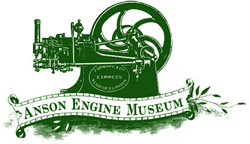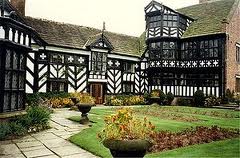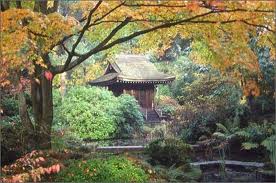Featured Attractions
Bollington Town & Countryside
Red Oaks Farm nestles in the Bollington valley. This quiet town provides excellent links to the local countryside and the Macclesfield Canal.
We encourage our visitors to explore the local countryside and take digital photographs. If you would like to submit a photo to add to our Gallery please contact Brenda Buxton at Red Oaks Farm. We hope you enjoy the images and you visit Bollington, stay with us at Red Oaks Farm, and visit all our local attractions.
The images used have been acquired from various sources. If you require an acknowledgement for an image used or would wish it to be removed from our Bollington Town and Countryside gallery please do not hesitate to contact Red Oaks Farm. The music accompanying the gallery is performed by Bollington Brass Band.

Local Shops
From specialist furniture to art, bakeries to restaurants, public houses and its very own brewery. Although a small town, Bollington has a number of shops for everyday items to something a little more personal. Macclesfield Town Centre is only 4 miles away which provides more shopping and entertainment, and Prestbury Village offers something a little more exclusive.
Macclesfield to Manchester is just a short train journey of 30 minutes away.
White Nancy
White Nancy is less than a mile away. Fantastic views from the top on a clear day.
Click on the map marker for more information.

Anson Engine Museum
This unusual and fascinating museum used to be one of the best-kept secrets among Cheshire’s many attractions. Over the past few years, it has undergone some major changes and is now recognised as one of the Country’s leading specialist museums.
Situated just south of Manchester in the leafy countryside of Higher Poynton, the museum is on the site of the old Anson Colliery. It is the result of Les Cawley and Geoff Challinor’s years of hard work collecting and restoring engines. This award-winning museum houses a unique collection of over 200 gas and oil engines, many maintained in running order. Ranging from early Crossley gas engines to more modern diesel. Engine enthusiasts from all over the world come to visit this fascinating museum.
Please visit the Official Anson Museum website.
Gawsworth Hall
Gawsworth Hall is an ancient manor house wrapped in romance, intrigue and great charm. Here you will find the Fitton family Chapel, first licensed in 1365, and still used by the family today.
The original Norman house was rebuilt in 1480 and, following extensive remodelling in 1701, was the subject of the most famous duel in English history in 1712 Lord Mohun and the Duke of Hamilton fought over the estates and both duellists were killed.
Here lived Mary Fitton, the younger daughter of Sir Edward and Lady Alice Fitton (Sir Edward had inherited Gawsworth Hall on the death of his father in 1579). Mary is possibly the Dark Lady of Shakespeare’s Sonnets. Her short, but brilliant career at the Court of Queen Elizabeth I (where she was appointed Maid of Honour in 1596) ended in 1602 following a rather wild affair with the Earl of Pembroke – she became pregnant, a matter that so outraged the Virgin Queen that both she and the Earl were sent to the Tower for an undisclosed period.


Macclesfield Silk Museums
The Silk Museums in Macclesfield tell the definitive story of silk. Compelling exhibits on three sites show a working Victorian Silk Mill, costume and silk manufacturing displays.
This ‘hands-on’ experience allows children and grown-ups to understand the story of silk from cocoon to catwalk!
Macclesfield Silk Museums offer a variety of experiences designed to meet National Curriculum requirements at the Primary level. Covering Victorians, Egyptians, silk and science, our educational visits bring history to life in a fun and interactive way.
Access to the collection is offered in terms of changing exhibits on display, particularly in the costume galleries. We also offer behind-the-scenes tours. Special interest groups or individuals can make arrangements to view items from our study collection. As part of craft workshops, we endeavour to include relevant items from the collection for close examination. We regularly lend items to other museums to include in their exhibitions.
Our philosophy is to preserve our collection whilst, at the same time, making it available to the public.
The collection and library are consulted by researchers from all over the UK and overseas. Please visit the official Macclesfield Silk Museums website.
Tatton Park At Knutsford
Set amidst more than 50 acres of Tatton Park gardens, at the heart of 1,000 acres of landscaped parkland, the elegant Mansion house at Tatton Park sits in an elevated position. The impressive portico of the South Front dominates the view of the house from the parkland.
From the turn of the 18th century, the Egerton family made a home on this site. An earlier house was extensively re-modelled in the Neo-Classical style, between 1780 and 1813 by the architects Samuel Wyatt (1737-1807) and Lewis William Wyatt (1777–1853). The rich furnishings of the Tatton Park mansion and its important collection of paintings and books reflect the growing wealth and status of the Egerton family at the end of the 18th and during the 19th centuries. The mansion houses one of the National Trust’s finest libraries and an outstanding collection of Gillow’s of Lancaster furniture. Add to this the extensive array of domestic offices and servants’ quarters and the Mansion offers a complete view of life in days gone by.
Tatton Park has recently embarked on a project with the Family History Society of Cheshire to document historical information about the hundreds of people who worked and lived at Tatton Park throughout the Egerton family’s ownership.
Please visit the Official Tatton Park website


Little Moreton Hall
The development, decline and subsequent restoration of Little Moreton Hall, near Congleton in south Cheshire, shadows the fortunes of the Moreton family who built it. Today the building could be the ‘crooked house’ of nursery rhyme fame. As one of the most famous timber framed buildings in England, Little Moreton Hall’s aesthetic appeal lies both in the variety of chequerboard patterns of black timber and white mortar, arranged to dazzle visitors, and the way that the house appears to be collapsing slowly under its own weight. The lack of furnishing and decoration throughout gives visitors an almost unique opportunity to study Tudor building techniques and architecture.
Please visit the National Trust Little Moreton Hall website